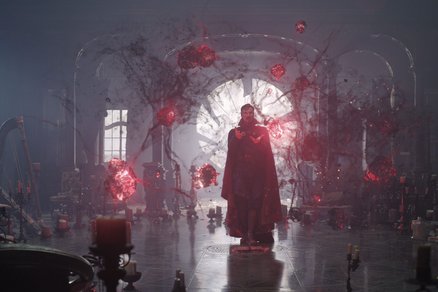
Doctor Strange In The Multiverse Of Madness
moderate horror, violence, threat, injury detail
Director Sam Raimi draws on his experience helming superhero films and his roots in the horror genre to bring a nightmarish twist to the Marvel Cinematic Universe (MCU) with Doctor Strange In The Multiverse Of Madness. In this instalment, the eponymous doctor must traverse different universes to evade Scarlet Witch, who seeks to unlock a powerful source of dark magic.
Key classification issues: horror and threat
Departing from previous MCU films, Doctor Strange In The Multiverse Of Madness features some notable moments of horror, including supernatural zombie-like creatures, jump scares, and demonic entities. The action largely takes place in alternate dimensions and universes, some of which resemble surreal dreamscapes in which the laws of our world do not apply. While fantastical settings and creatures are familiar to Marvel fans, the horror elements of this adventure may surprise or scare younger audiences.
Our research has shown that people see a distinction between ‘threat’ and ‘horror’. Physical and psychological threats can occur at 12A/12, but horror content should not be frequent or sustained. The horror sequences in Doctor Strange In The Multiverse Of Madness are occasional but not frequent, and occur within a clearly fantasy context. They are regularly broken up by action, humour and spectacle and the overall tone of the film is not disturbing. Even a scene in which a decomposing corpse is magically reanimated contains moments of comedy and reassurance as our hero possesses it, rather than it terrorising people.
We classified Doctor Strange In The Multiverse Of Madness 12A for moderate horror, violence, threat, injury detail, and produced a ‘What You Need To Know’ resource on our website to make people aware that the film was scarier than other films in the MCU.


